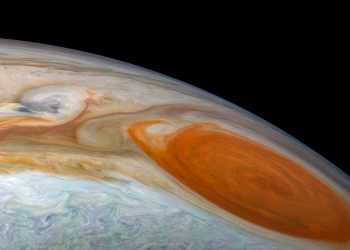Stark landscapes of black and gray sediment stretch endlessly under a sky touched by shadowy mountains, with boulders scattered on the barren ground. While the scene feels as though it belongs on the Moon, the people walking through this otherworldly terrain are dressed not in spacesuits, but in hiking gear. This is Iceland—NASA’s go-to stand-in for lunar surface training since the Apollo era.
This summer, the crew of NASA’s Artemis II mission joined this storied tradition, utilizing Iceland’s unique terrain for their field training. The astronauts, including NASA’s Reid Wiseman, Victor Glover, Christina Koch, and Canadian Space Agency’s (CSA) Jeremy Hansen, were accompanied by their backups, NASA’s Andre Douglas and CSA’s Jenni Gibbons. The group partnered with geology experts to prepare for their upcoming lunar mission, slated to be a major step toward humankind’s return to the Moon.
Why Iceland is NASA’s Lunar Stand-in
Iceland, with its volcanic terrain, closely mirrors the Moon’s surface. “Apollo astronauts considered Iceland one of the most lunar-like locations,” said Cindy Evans, NASA’s Artemis geology training lead at the Johnson Space Center. “The landscape offers volcanic processes and topography that resemble the Moon, giving astronauts a chance to explore and observe features similar to those they’ll encounter on the lunar surface.”
Both Iceland and the Moon are dominated by basaltic rocks, formed by rapidly cooling volcanic magma. These iron-rich rocks can be found in both volcanic eruptions on Earth and in the lunar impact basins that once filled with lava. Additionally, both environments host breccias—rocks composed of angular fragments fused together. In Iceland, these breccias form during explosive volcanic events, while on the Moon, they are created by meteoroid impacts.
Beyond the geology, Iceland’s rugged landscape allows astronauts to practice the teamwork and navigation skills essential for lunar expeditions. The crew tested tools like hammers, scoops, and chisels to collect rock samples, providing feedback to refine equipment for future missions.
Training for Future Lunar Exploration
While the tools may seem basic, they are tailored for space exploration. Trevor Graff, an exploration geologist on NASA’s Artemis science team, explained that many tools used during the Apollo missions remain effective today. “Geologists typically work with a standard set of tools like hammers and shovels, but we have to adapt these for the Moon, where mass is limited, and astronauts wear pressurized gloves,” Graff said .
NASA engineers are also ensuring that the lunar samples collected remain pristine for scientific analysis back on Earth. This attention to detail is part of what will make Artemis missions transformational for lunar science, according to Angela Garcia, Artemis II science officer at NASA’s Johnson Space Center.
Artemis II marks NASA’s first crewed mission under the Artemis program, with a goal of returning humans to the Moon. While this particular mission won’t involve landing, the crew will orbit the Moon, traveling 4,600 miles beyond its far side. During their journey, astronauts will study lunar surface features from space, capturing photos and analyzing features like craters to understand their geologic history.
Paving the Way for Future Lunar Missions
One of the key objectives of Artemis II is to help scientists gain better insights into lunar geology. As Kelsey Young, lunar science lead for Artemis II at NASA’s Goddard Space Flight Center, noted, “Having astronauts describe what they see in real-time provides crucial data for researchers.” This human element—the ability to make detailed observations and relay them back to Earth—is invaluable for advancing lunar science .
The Artemis program will eventually see the first woman and the first person of color land on the Moon. As the world watches these historic missions unfold, the preparation happening now in places like Iceland will be essential to their success. Looking ahead, the lessons learned from this field training in Iceland will shape future exploration of both the Moon and, one day, Mars. Each step taken by NASA’s astronauts brings us closer to a new era of discovery—one that will push the boundaries of human knowledge and exploration.











